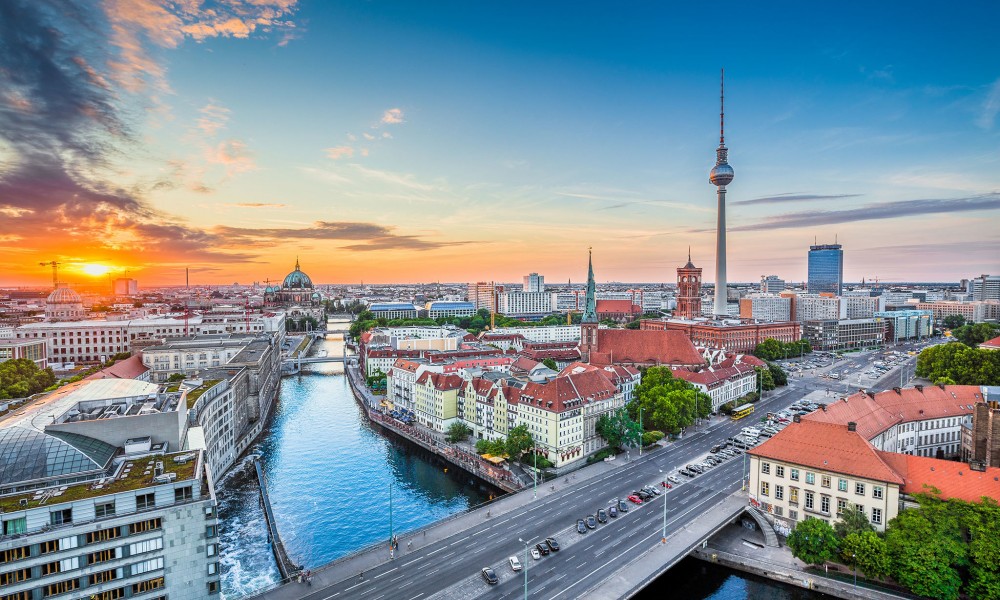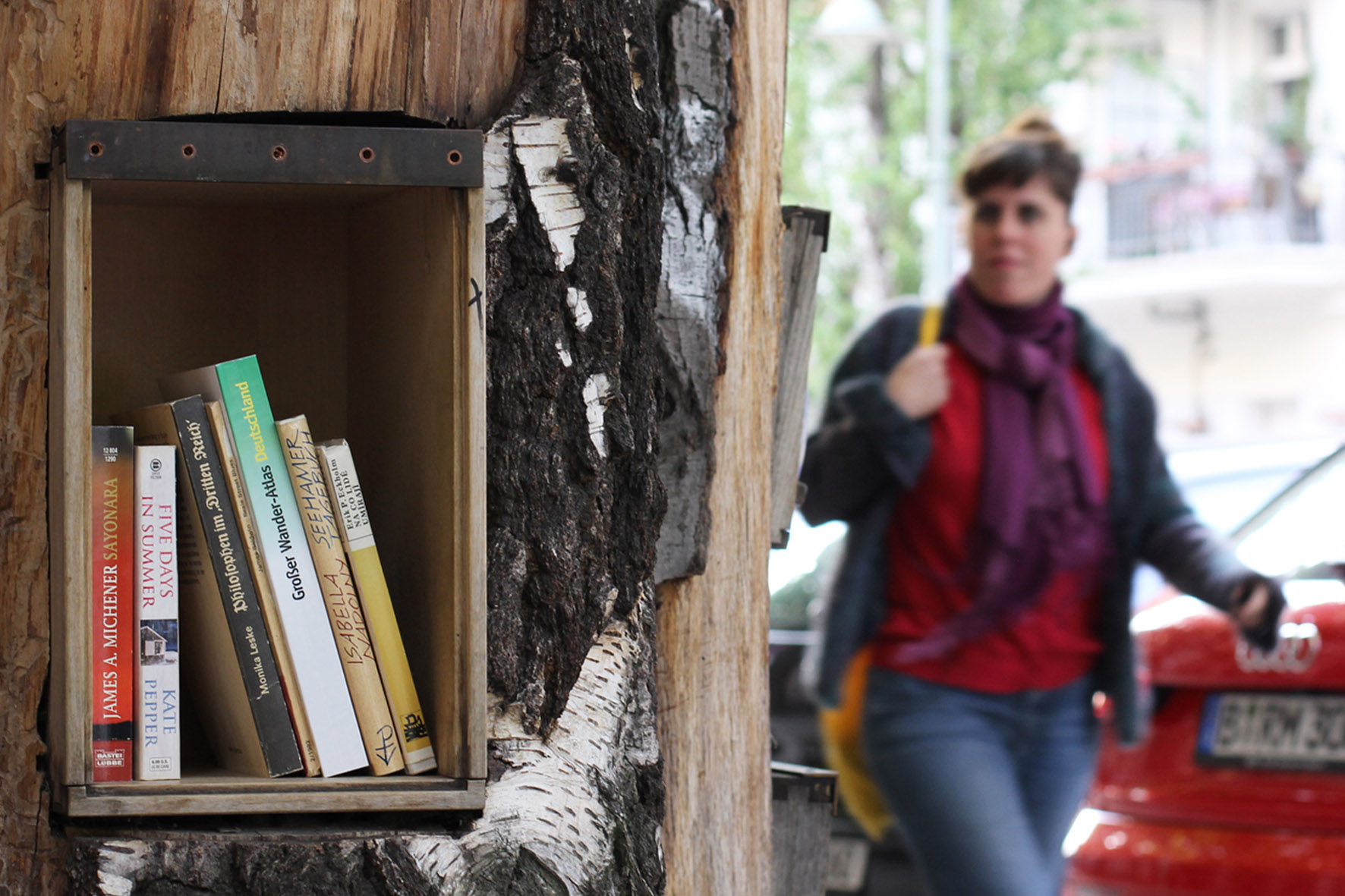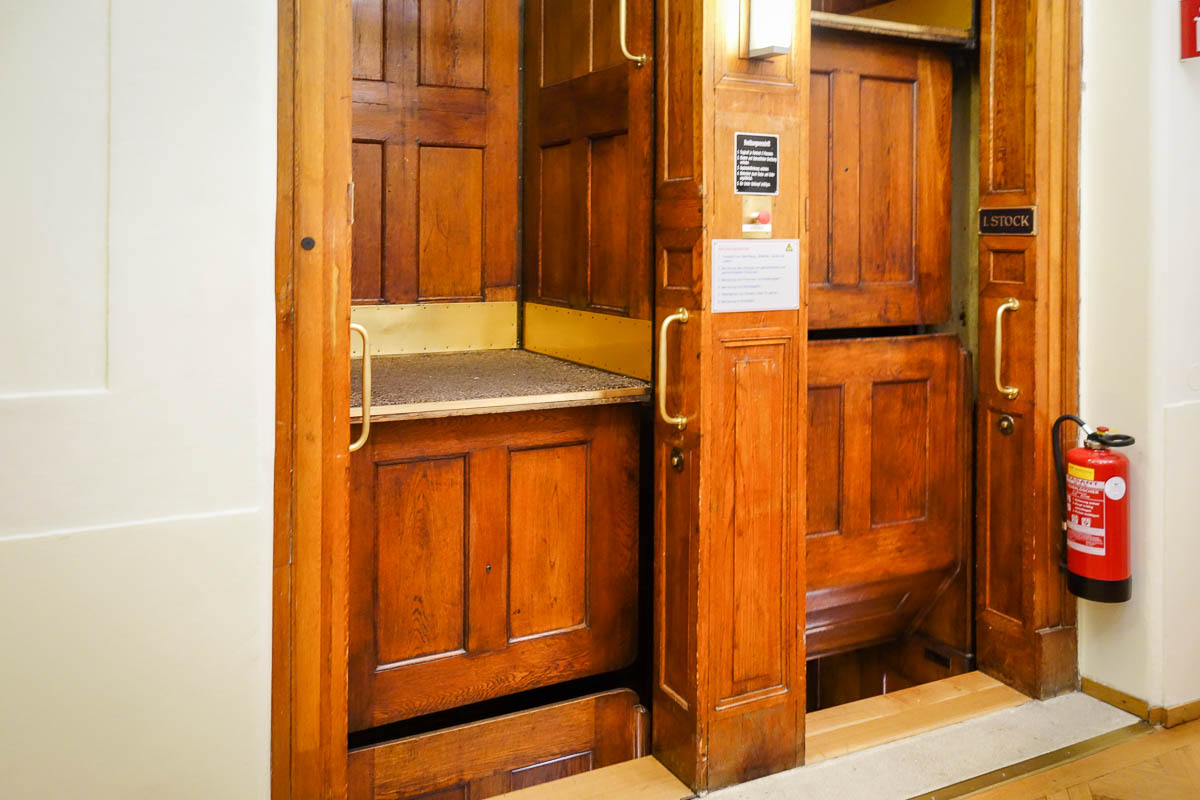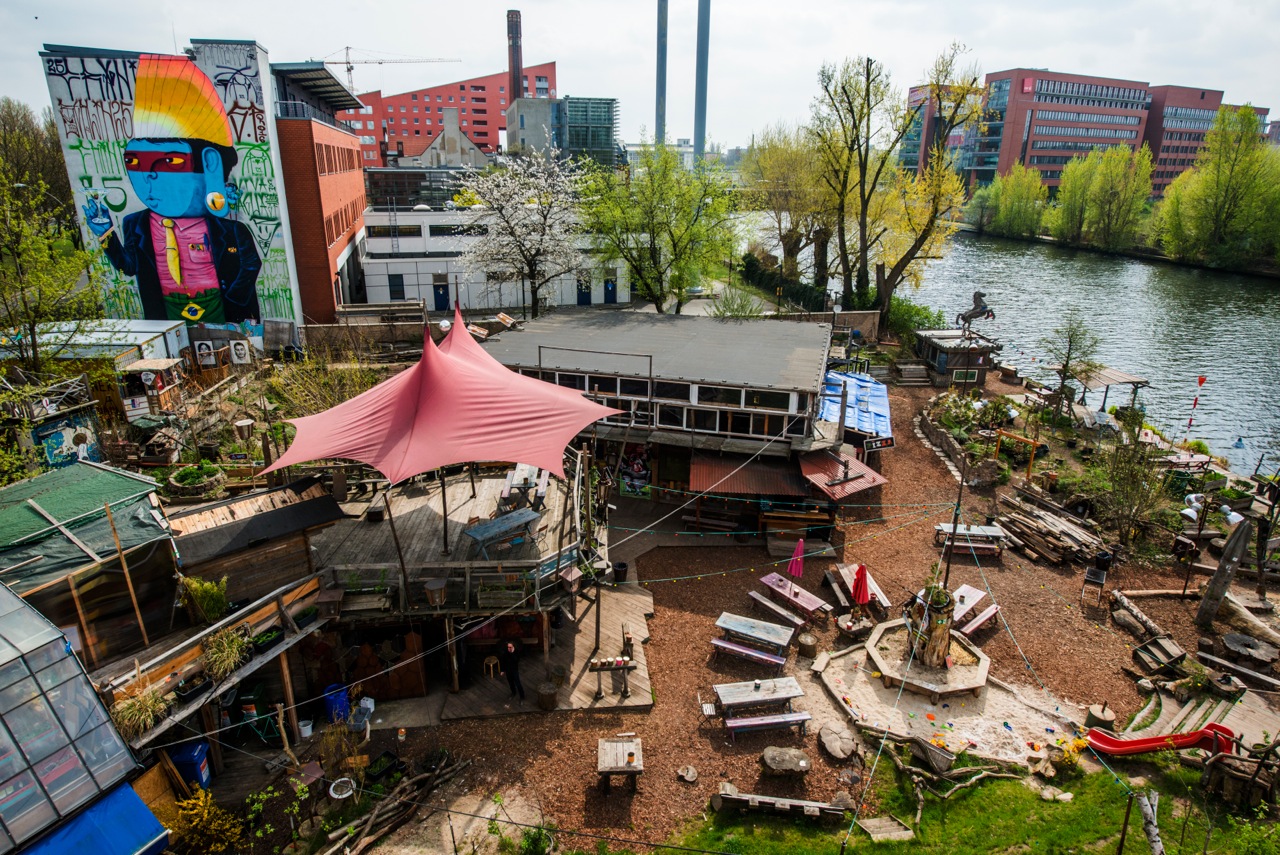Berlin zest

Book Forest. In the middle of the city, you can come across a book-crossing kiosk set amidst a tree trunk where you have the opportunity to exchange your book for another one. You can find the "forest", for instance, in the Prenzlauer Berg street, and immerse yourself in reading right there in nearby café.
Advertising. In Berlin they rarely get rid of advertising posters and wall ads, so the new ones are clinged on top, layer by layer. Thus, pillars and walls overgrew with advertising, it even turned into some kind of art trend, and elsewhere you can find true promotional hollows. Photo withberlinlove.com
Photo withberlinlove.com
Stumbling Stones. Germany's capital should be explored not only looking around, but also staring down at the pavement. In Berlin, you can see something alternative and sometimes even shocking. For instance, the brass bricks with names engraved on them commemorating individual victim of Nazism murdered during World War II. The author of this social project entitled Stolpersteine (Stumbling Stones), Guenther Demnig, is of the opinion that memory of a person disappears when the name is forgotten, and to prevent it we have to preserve names. The idea won the support of ordinary Germans and now ordinary paving interspersed here and there with truly invaluable street items. Online project (http://www.stolpersteine-berlin.de/) shows map with addresses of all Berlin brass bricks.
Reichenberg Straße. Should you visit Reichenberg Straße in Kreuzberg area, you will find a bunch of different artefacts buried in the ground: from cork to piano section. So, watch your step!
Read also: On the catwalk: Germany
The Paternoster Elevator. Another German highlight is non-stop elevators. The Paternoster is a chain elevator of open compartments that move continuously in a loop. You simply step into the moving elevator in the direction you want to go and step out when you reach your desired floor. Colloquially this type of elevators is called Paternoster (“Our Father”, the first two words of the Lord’s Prayer in Latin) rather in reference to its resemblance to rosary beads. One of these elevators can be experienced at the Ministry of Foreign Affairs. But be careful, since the user needs practice. The Paternoster technology is not very secure and is prohibited for use by children. Yet, these elevators operate just because ordinary Germans defend their right to exist as monuments of technical culture. Photo pinterest.com
Photo pinterest.com
Timber Market. Banks of the Spree River have always been a popular holiday destination for residents and guests. Luckily, society managed to protect a highly coveted piece of land from capital-driven real estate market. Now the Spree Riverbank is a home to the Holzmarkt (which literally translates as "Timber Market"), it is some kind of social and cultural open space for creativity, living and working, a getaway from over commercialized city.
The idea of this project is to encourage urban population to develop a large free area, and to erect a mini-city on their own. The Holzmarkt is a new vision of city concept, an experimental quarter, which is intended to be a full-value part of Berlin. This is residential, and alive innovative quarter fusing nature, culture and work, where you can live, create, perform and relax. Photo mitvergnuegen.com
Photo mitvergnuegen.com
Holzmarkt has a sponsor covering expenses for construction works. The Holzmarkt Cooperative Society was founded to address the major issues. To become a member, one need to make a monetary contribution, to realize and accept the concept, and to be willing to grow mini-city. Anyone is allowed to present business/cultural/social projects to the Cooperative and, in case of a positive decision, to start implementation.
Read also: Shy Hannover
Now the place gathers those with alternative cultural and social ideas, who works not just for yields but only guided by the desire to create.
Nowadays in the Holzmarkt you can learn about city agricultural projects, attend a theatre performance, have meals, plant your own small mountain ash, and unite with nature watching the animals: an access to and exit from the water is created, and thus the area becomes a resting place for animals and humans. The combination and interaction in everything is priority of the Holzmarkt. Who knows maybe in the future public will go to Berlin in order to see not the walls, but their absence.
Cover photo timeout.com





















